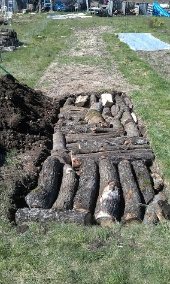
 2
2




















 1
1








Not that I am aware of. The wind swirls there from what he said as they are in a bit of a bowl, so I don't think there's any prevailing direction. Any experience with that where you are?Will he be doing any along the windbreaks that are already there?
We discussed berries if you count them as shrubs, however he thought they would be blown right out of the bed. It's no joke windy there and I am sure you know all too well. I was thinking siberian pea shrub Caragana arborescens. They are always interested in volunteers and visitors, so PM me if you would be interested in their contact info. I appreciate your help and am excited that my Dad is seemingly hooked. It went from sending him Paul's playing cards to a fairly large hugelkultur bed pretty quick so that's promising.Any fruit trees or shrubs in the plan




 1
1




 1
1








 2
2




 1
1




 2
2




 1
1




 1
1




 1
1




paul wheaton wrote:It would be great to make lots of links to all the peaceful valley stuff - I like those guys a lot.
 2
2




 1
1












 1
1





|
All of the following truths are shameless lies - Vonnegut
Support permies and give beautiful gifts to gardeners: permaculture playing cards.
https://gardener-gift.com/
|





